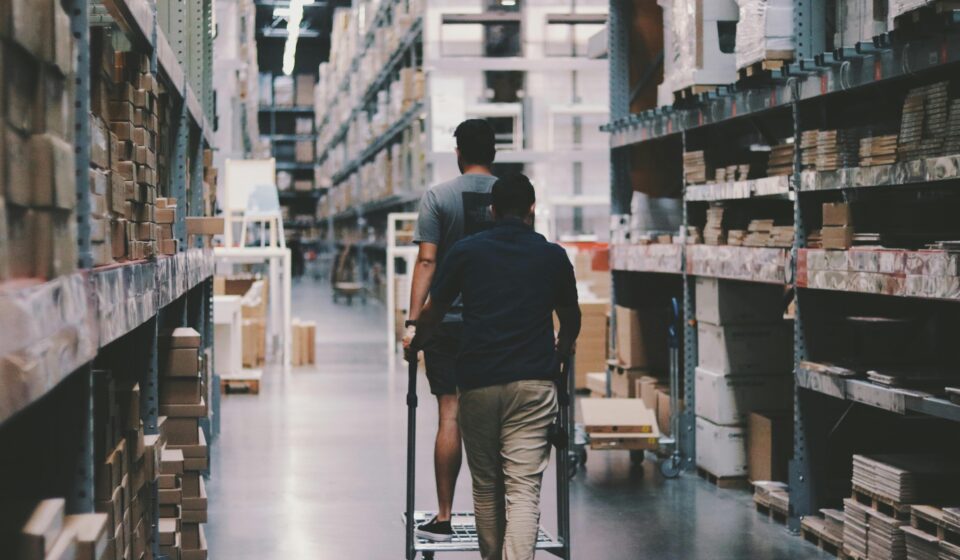
Optimizing Reverse Logistics with AI: From Returns to Refurbishment
How Smart Supply Chains Are Turning Returns into Value
In today’s hyper-competitive market, returns are inevitable — but how companies handle them can make or break profitability and customer relationships.
Whether it’s returned goods, product recalls, warranty repairs, or refurbishment programs, reverse logistics often represents a hidden cost center — draining resources, inflating inventory, and complicating operations.
Traditionally treated as an afterthought, reverse logistics is now emerging as a strategic opportunity — especially when powered by Artificial Intelligence (AI).
AI is transforming reverse logistics from a reactive, manual process into a data-driven, optimized operation that reduces costs, improves customer satisfaction, and supports sustainability goals.
The Challenge: Why Reverse Logistics Is So Complex (and Expensive)
Returns and reverse flows are notoriously difficult to manage because they are:
- Unpredictable in volume and timing
- Fragmented across multiple channels (retail, e-commerce, distributors)
- Costly due to inspection, sorting, and restocking labor
- Environmentally wasteful when returns end up in landfills instead of being repaired or resold
Without proper visibility and control, reverse logistics quickly becomes a profit drain.
How AI Unlocks Value in Reverse Logistics
AI brings intelligence and automation to every stage of the reverse logistics process — from the moment a return is initiated to final disposition (refurbishment, resale, recycling, or disposal).
Here’s how AI optimizes reverse logistics:
✅ 1. Smarter Return Authorization and Forecasting
- Predict return rates based on product type, customer segment, seasonality, and past behavior
- Identify high-risk products prone to returns before issues scale
- Enable dynamic return policies based on data-driven risk profiles
Value: Reduce unnecessary returns, improve forecasting accuracy, and optimize labor planning.
✅ 2. Automated Inspection and Sorting with Computer Vision
- Use AI-powered image recognition and machine learning models to automate inspection of returned items
- Detect product condition, damage level, and refurbishability
- Classify items for resale, repair, recycling, or disposal
Value: Reduce manual labor, improve accuracy, and speed up turnaround times.
✅ 3. Optimal Disposition Decisions
- AI models recommend the most profitable or sustainable disposition path for each returned item:
- Restock as new
- Refurbish and resell
- Harvest parts
- Recycle or dispose
- Factor in resale market data, repair costs, and environmental impact to guide decisions.
Value: Maximize recovery value, minimize waste, and align with ESG commitments.
✅ 4. Refurbishment Workflow Optimization
- Predict which returns are economically viable for repair or refurbishment
- Schedule and prioritize refurbishment activities based on demand forecasts and inventory gaps
- Optimize spare parts procurement for refurb operations using machine learning predictions
Value: Reduce refurbishment costs, avoid part shortages, and improve lead times for resale.
✅ 5. Returns Experience Enhancement
- AI-powered chatbots and virtual agents guide customers through the return process smoothly
- Offer personalized return options (e.g., in-store drop-off, pickup scheduling, instant exchange)
- Improve customer satisfaction while reducing manual support workload
Value: Boost brand loyalty and reduce customer service costs.
Real-World Impact: Reverse Logistics Success Stories with AI
| Use Case | Result |
|---|---|
| Predictive Return Forecasting | 15–25% reduction in unnecessary returns |
| Automated Inspection | 30–50% faster processing of returns |
| Optimal Disposition Modeling | 20–40% improvement in recovery value |
| Refurbishment Optimization | Shortened refurbishment cycle times by 25% |
| Customer Experience Automation | Higher CSAT scores, lower support costs |
Sustainability Bonus: Reverse Logistics as an ESG Lever
Returns and refurbishments aren’t just operational issues — they are ESG opportunities.
AI-powered reverse logistics supports:
- Waste reduction by minimizing landfill disposal
- Circular economy models through repair, reuse, and resale
- Carbon footprint reduction via smarter return routing and fewer unnecessary shipments
Forward-thinking companies are positioning their reverse logistics strategy as a sustainability differentiator.
How to Get Started with AI in Reverse Logistics
- Map your reverse logistics flows — understand where returns are coming from and where they’re going.
- Collect and integrate data — return reasons, product condition, customer profiles, resale markets.
- Identify high-impact areas for AI deployment — inspection, disposition decision-making, forecasting.
- Pilot AI tools with clear KPIs for cost savings, recovery value, and cycle time improvement.
- Scale and continuously optimize — feed learnings back into your models for continuous improvement.
Conclusion: From Cost Drain to Value Creator
Reverse logistics doesn’t have to be a drag on profitability. With AI, it becomes a strategic lever for cost savings, customer experience improvement, and sustainability leadership.
By using AI to optimize returns, refurbishment, and recovery processes, companies can transform reverse logistics from a back-end burden into a front-line advantage.




